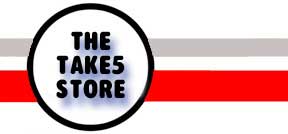Why Mac Ads Are Not Like iPhone’s “Demo Ads”
The new iPhone ads are very slick and offer a dazzling demo of why you’d want one.
So, some people wonder (like TUAW) why Mac ads aren’t like the iPhone – why are they of the I’m a Mac and I’m a PC variety and not outright demos of features of the Mac.
For that reason, we have to travel back in time to a distant past … and in case you’ve forgotten all that has changed in 25 years, USA Today has thoughtfully recapped it for us.
First, there is a MAJOR, MAJOR difference in society, households and how people approached technology. For many of us, the 1980’s ushered in an era where our love of gadgetry and technology was finally out of back-room hobby shops and in gleaming palaces (well, okay ‘strip malls,’ but it was still an improvement) but you have to keep in mind, the rest of the people – the mass market would only slowly began to embrace technology but not necessarily for all the right reasons.
BECAUSE WE WERE “DUPED.”
The first Personal Computer selling revolution (1982-1992) was fueled by the ABSOLUTE NEED to have a personal computer on a desktop at home in a prominent location. It meant you were tech savvy, with the “in” crowd of a world order where at your fingertips, you could harness the power of the then REAL high (as in highfalutin’)-technology to unleash your desires. It was much more than just another purchase – it also proved you could afford the best the world had to offer. And of course, you had to buy the best tools for your kids to crush all the other kids.
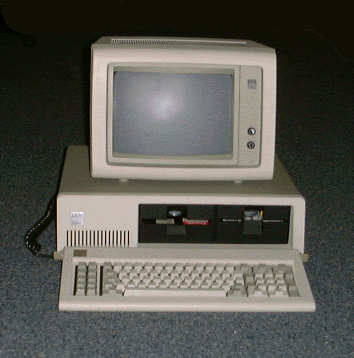
Also keep in mind adjusted for inflation, a $2,500 computer would cost you about $5,000 in today’s dollars. It was a major commitment or view it this way, when the average house cost about $50,000 (okay, not in California but it’s a benchmark) and you could buy a rock bottom priced car for @$6,000 – buying a computer was not just a random stroll into Walgreen’s.
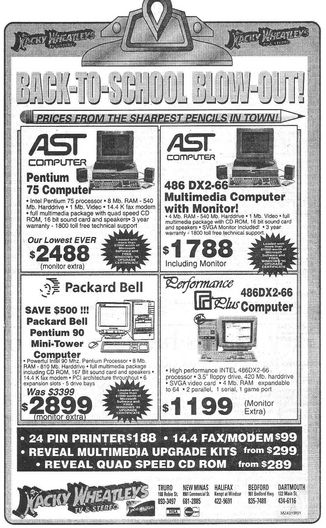
Only problem was that for 65% of people, when they got the thing home, it was really just an expensive thing. Add in some software and what do you really have? Who wants to come home after a long day or week at the office to work on: word processing, a spreadsheet, home budgeting (honey, I’ve spent three weeks inputting all our data, this 4-color pie chart shows that we would be doing great if we hadn’t spend $3,000 on a computer. Come on down and look at it – man, this would look great if we could afford a $1,000 dollar 4-color printer!) or the new category, taxes!
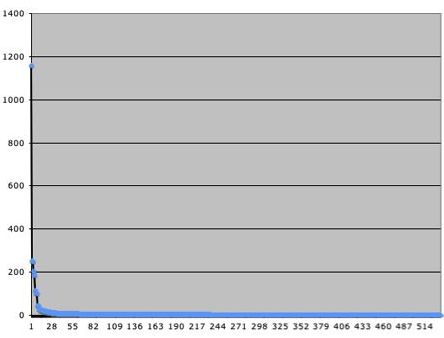
Pre-internet, your computer was exactly 100% what you bought. If you wanted anything else, you had to buy it – sure, there were more games to play but the computer didn’t just automatically change people’s lives. Unlike a microwave which could now heat you a dinner in 3 minutes, a computer is only as good as the input. When you turn it on, you got the cascading jumble of DOS letters, then it sat with a blinking cursor awaiting your next move (later, of course, graphics were added) but still – what was it? A “desktop” with icons – now what? To most Americans, a computer UI was nothing else on the planet … where geeks saw unlimited power (well, in the tens of megahertz!), the rest of America saw a screen with “icons” that just sat there.
The power of the spreadsheet is immense but frankly, you have to do all the hard work of inputting in numbers, writing macros and formatting it before you get anything back … for most Americans, it just wasn’t that interesting and worse, it was hard work.
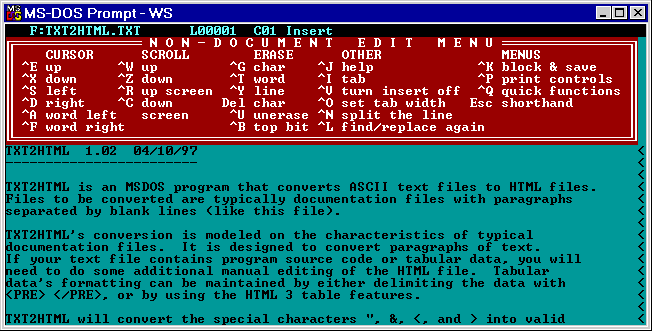
As prices dropped, people kept buying them because what modern home didn’t have a personal computer, it’s was like the 1960’s with TV all over again. You had to prove you could afford a personal computer as a not-so-secret handshake into the middle class … or of course, it’s for the kids – what kind of a parent would deny their kid into the ultra super duper world of computers? What also didn’t hurt were the great American success stories with technology – Steve & Steve, Bill & Paul Allen, of course and dozens of others. Of course, you had to get in on the ground floor of that so your kids would be ready to topple them or follow their lead.
At least prices kept dropping giving the illusion you were just better off so it was an easier buy but really, other than games, how exciting was a PC in day to day terms?

(Again, I’m NOT talking about the 40% of geeks who were beginning work on the next phase of computing).
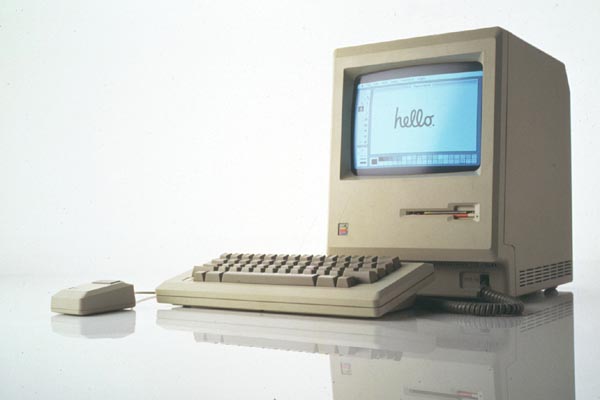
THE AGE OF DISILLUSIONMENT
The years 1994 to 1998 were the years that computers were essentially affordable to anyone with a steady job but there was still a huge gulf. There were the 40% of people who absolutely loved their computer and tried to figure out how to revolve every aspect of their life around. The processing power was weak but people tried to get every last ounce they could. Social communities were formed with this wondrous thing called email and online communities like THE WELL. For that 40%, things were just beginning to get interesting.
For the other 60% of “average” Americans, it was – yea, I’ll buy my kids a computer on their checklist of life (along with BIG WHEEL, CANDYLAND & SAFETY HELMET) because obviously it’s useful for writing term papers but damn it if I’ll spend over $999 (the bargain price of the era). These people used computers at work and frankly, that was it – it was a cash register, it was a jiffy lube terminal or it was yet another TPS report to type (it is supposed to be Old English font?, ah, who cares) – then of course, let’s print it out and put it in the inter-office mail – the network was one HP printer for every one PC anyway 🙂

So after the era of real expensive computers as show and the era of BFD, it’s a computer, the “internet era” just sounded more like marketing hoohah. (and yes, the actual internet era started earlier but I’m talking about the year where it was no longer ‘another AOL” to 60% of Americans).
That’s one reason us computer geeks are/were astounded at the slow speed of DSL/cable penetration – true computer geeks saw the shaft of light from above two minutes after they saw Mosaic or Netscape (I’m saying two minutes because it took that long for the first photo to draw) and while yea, 98% of all the websites were grainy photos with 11 fonts and with the gray background, geeks saw the potential – but the reality is most ‘average’ Americans had given up on computers. It was almost like buying a kit car – you mean I have to buy additional parts and “build it” myself?
I NEARLY LOATHE IT
Most everyone who reads this can tell an USB A plug from a USB plug in the dark. We have never lost our interest and our wonderment at our home computer even before it could connect to everyone on this planet but for most people, after some 20 odd years of the personal computer, the personal computer represented two things to the average American.
MYSTERY BOX taunting them that they they aren’t smart enough to get it.
SCARY BOX that would just stop working.
The mystery box syndrome is that this box is full of stuff I’m supposed to know and yet, I don’t. Yea, I’ve seen people make movies, print photos and do amazing things on their personal computer – THEY MAKE IT LOOK EASY – am I dumb or am I just not putting in the effort? Either way, thanks for making me spend $1,000 on something that makes me feel old and stupid.
The scary box is the experience from using a PC at work (sorry to pick on the PC here but) for every Alienware PC, there are 10 at the jiffy lube, for every PC supercomputer, there are 100 at a customer service center where the workers are timed to complete every call within 4 minutes, and how many people at work have not gone a year that either you or anyone within 10 feet of you have had some HDD die or logic board die? One really bad year, I had three dead HDD’s, one monitor sparked, emitted an odor of death but alas, did not actually catch fire. So, not only is the PC the ball & chain of your desk, watching, recording you and just when you need it most – it dies or it’s just a giant timer or really, it’s just a giant post it frame for kids and notes from your boss to print out that 500-page PowerPoint slide and file it.

PROMISES, PROMISES
Combine that with the marketing of personal computers from 1980 to 2006 and what do you have? Lots of singing, dancing, shilling and promises, promises.
All software was crazy fun and would make you smarter. And even to this day, what do Microsoft ads promise? The ones with the squiggly lines – that kids who use Microsoft products and dream will become astronauts or whatever, right? Who really believes that today? People know it’s just a computer. If it turns on, it’s a good day.
Even the brilliant Apple Mac ad, 1984 – what did it promise to average computer users? The freedom from tyranny and to crush and topple an oppressive society bereft of pleasure & individuality?
I know it was it was built in my Mac 🙂 I think that feature was on a cassette drive for the Tandy 🙂
COMPUTER DEMO ADS
Why doesn’t Apple use demo ads? Because NO ONE BELIEVES IT.
Because for true computer fans, they don’t really pay much attention to TV ads anyway, they know they’re not going to find the info they really want – what RAM module it takes, what’s the bus cache or how many watts does it suck up?
And for the average computer buyer? Yes, the internet era is so much nicer, it adds huge value to their computer. They don’t have to keep buying apps to extend the usefulness of their computer – they can read the news, they can play games, they can view photos and it’s even fairly easy to load pictures onto websites (though – BROWSE? What am I browsing again?) It’s still a little weird and when it stops working, they don’t really know why this machine is way more finicky than their microwave, alarm clock or TV … and frankly, they feel like they’ve been lied to – part of it is that something like 40% of internet surfers are still on dial-up, yea, hard to believe but to them, that is the speed of the internet so obviously their experience doesn’t really match what’s in the ads but look at a Microsoft ad from 1996. I’m not even sure in 2007 unless you have the FIOS fiber running straight to your house, can you really visit about 40 websites in 30 seconds? Of course, we could see through the hype but for most Americans – this is what MS essentially said was the experience they should expect and people wondered why their actual experience was a disappointment.
When they see a flurry of things people do on the computer, THEY DON’T BELIEVE IT. They see ads where cameras get attached, photos get downloaded, brighten with effects and borders added and on the internet in like 8-seconds in a :30 second TV spot, they don’t believe it. Of course, OSX and Mac apps has resolved a lot of these issues and even XP is way better than before but it all still seems like Hollywood CGI effects. It falls under the category that when I pop open this soda, honestly, I’m pretty sure that not everyone in my neighborhood will turn gorgeous and suddenly start dancing … same with my computer. And frankly, if you pay $399 for a computer, how much magic do you expect?
Here’s an ad for Intel Pentium’s from 1994 which again promises BLAZING speeds in browsing and video … 13 YEARS ago …
ALL FOR ONE LOW, LOW PRICE
The other problem is that the branding for 99% of computer makers consists essentially of – WE HAVE THE LOWEST PRICE! That was a seductive pitch during the time when every sale meant more profits so why now shave a little here and there and next week, some more there and then later, some more over here. So after 10 years of this, people switched from Packard-Bell’s to eMachines to Gateway’s to HP’s to Dell’s at the drop of a trucker hat. The PC industry is the only one that could craft a name of out of essentially nothing (Packard Bell was a license of a mostly dead 1950’s transistor radio company but soundly vaguely like an long time brand like Motorola or Zenith and or a confusion with Hewlett-Packard, of course). Only in the PC industry could you go from a name plate on an assembled bunch of plastic to a billion dollar conglomerate and then back to zero in about 5 years – because while the PC makers talked customer service, innovation and cutting edge, all they really sold & delivered was on price. Now, there’s nothing really wrong with that but the problem is that once you build a customer base 99% based on price – you have the least loyal audience possible (no matter what you are selling). If they are ready to buy again even if they were happy with their last purchase, a cheaper competitor might just sway them – that’s not really marketing or branding, that’s just sales promotions – great when things are great but when overhead goes up & you are not the low cost leader anymore? Your customers switch and of course, since they all ran Windows, to the consumer, Windows is the brand and the manufacturer is nothing – sort of like buying Cheerio at the Piggly Wiggly instead of Safeway.
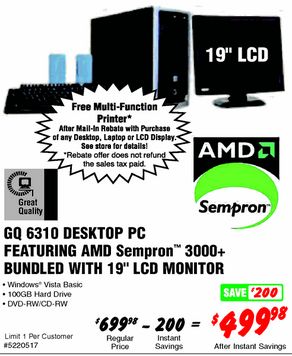
What an elegant showcase for your brand! It’s enough to make your CMO officer weep like a 6-year who just dropped his Otter Pop down the storm drain.
Sales promotions works of course – only problem is you tell potential customers, our products are only worth buying on sale as the auto makers also found out when they tried to raise prices – sales dropped. Your whole marketing or branding message & takeaway is that we are cheap this weekend and this weekend only!
The 1% BRANDING
So when PC manufacturers aren’t shouting it’s the lowest price of the season, they waste money with branding to please marketing and their corporate ego but these ads don’t really work because they don’t have the money to run a whole long term series of them so they try to cram in every message under the Sun in the few spots they can afford to run.
“We’ll make your kids smarter! The best customer service! The lowest prices! The best quality! It’s so easy to use!”
ALL In :30 seconds.
And after the singing and dancing, were they ads for laundry detergent? baked goods? or some perfume?
An effective ad can only embed so many marketing messages to a consumer as part of your mindshare. Whether you are selling chocolates or trucks or personal computer, you have to decide on one message and stick to it. Too many messages just cloud the issue – that’s one reason even showing iLife in action is much less effective than just saying it – when people see photos, videos, music, etc, they’re just confused – what am I seeing again and then back to … am I just being snowed again by some fake special effects?
(PC manufacturers had the extra problem of not only overcoming Microsoft’s giant startup screen but also Intel telling everyone every 2 minutes on TV during the 1990’s that it’s not a Dell or a Compaq, it’s an INTEL PC.)
I’M A MAC
That’s why the I’M A MAC ads are closer to the target because of three reasons:
a) It is about trying to say – hey, you know, you’re not so dumb. It’s not you – maybe it’s your PC? Like choosing a PC, that it’s not that he/you is NOT a hard working guy but who maybe is a guy concentrating on the wrong things … that maybe your computer choice is a little too buttoned up – there is a more easygoing choice.
b) The I’M A MAC at least strips away all the rest of the singing, dancing and effects. It is at least straightforward and in plain sight. Two guys. White room. One talks. The other guy talks. Hopefully you can hear through the clutter.
The setting of the ads also serves as Apple’s branding. That it is quiet, straightforward and not an oversell – so even if you don’t hear the message of that particular one that’s airing this instant, the take away is that Apple is being straightforward and open – that even if you can’t quite articulate the “mindshare,” position that Apple is attempting to stake out, your takeaway perception is that Apple’s position is that they stand in plain sight. You don’t have to buy the ads and its message 100% right now but that each steps makes you more receptive to the overall final message.
c) And lastly – as Apple is smart to focus on the long term, they don’t cram EVERY selling point of the Mac in every ad. They try to sell you one or at most two points. And then repeat in a different way a few months later as a reminder or they add to it. But each I’M A MAC ad is another rung in a glass stairwell to their ultimate goal – you adding them all up and walking on them to buy a Mac. And in one sense, when you run a long term ad with “benefits” of your product (and with a consistent look & feel), even if the sound is off at a store or bar, and you see it’s them in a “new” scenario, you automatically conclude … yet another benefit for the Mac? Even more? They’re still at it with how the Mac is better?
Now, you add the benefits of a, b & c …
Is it effective? Can you tell it’s an Apple Mac ad? Are you intrigued? Can you spot an HP or Dell ad? It’s effectiveness is different because it’s a branding & marketing campaign for the long term path and not a path of desperation. Apple can afford to tell you their story – :30 seconds at a time over a year, two or longer. Because Apple has the luxury of time (and money) and no real need to shout “ON SALE,” they can take this measured approach where it is real marketing and real branding and that there’s more to buying a personal computer than price.
Their goal is not necessarily world domination. With the internet, it really hardly matters what computer you use since as we have covered, there are literally hundreds of fully functionally apps online that only require a web browser (plus java & flash). Apple’s only goal is to stake out the premium position and make sure they stay there by reminding people why they should choose a Mac or why they did chose a Mac.
(My choices as the best of the I’M A MAC ads? Genius, Stuffed, Get a Vista, Gift Exchange, Accident, Out of Box, & Security (more for computer geeks).
THE CELL PHONE MARKET
The cell phone market is at a completely different place. The bottom line is that a phone is disposable – even at a couple hundred bucks or more – because we have it on, we have it on us and we’re holding it to our heads everyday (or if you prefer something less subtle – vibrating in our nether region :-), it’s easily dismissed as something we’ve derived max value from pretty quickly and like the very early days of the personal computer, because it’s so visible, it is a status symbol – hence the interest to switch to show off … so the iPhone ads merely point out how quickly you can show off the iPhone dazzling features to others and of course, dazzling true phone geeks with its ease of switching from voice to mail to browser … and of course, why it’s worth an upfront price commitment of 2 to 10 times what you might normally pay for any old phone.
And in case no one has noticed – each Apple division’s ads gets a different background?
WHITE: Simple, Open, Nothing Hidden – the MAC.
BLACK: Elegant, Luxurious, Stylish (always in season) – the IPHONE.
COLOR: Fun, Vibrant, Young – the IPOD.
That’s how you brand every detail.





